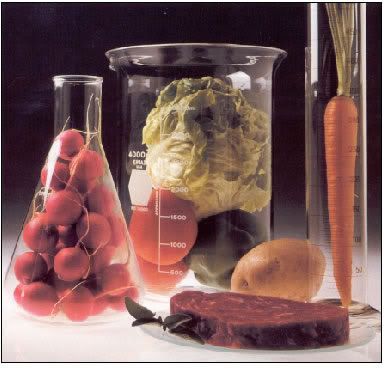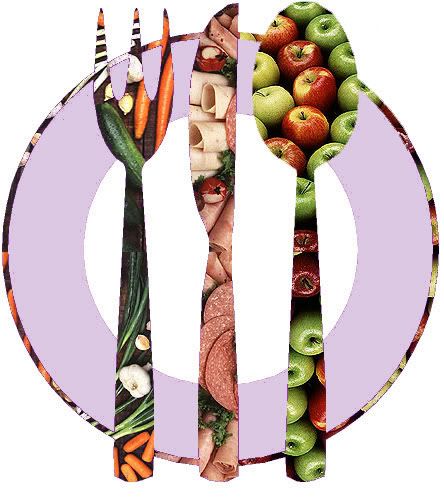Low-Fat Dietary Pattern and Risk of Cardiovascular Disease.
CLINICAL TRIALS AND OBSERVAtional studies have identified strong associations between low-density lipoprotein cholesterol (LDL-C) level and other cardiovascular disease (CVD) risk factors and dietary intake of fats, particularly saturated and trans fats, cholesterol, plant products, and grains or fiber. Epidemiologic studies have demonstrated that diets low in saturated fat and cholesterol are associated with lower rates of CVD and have implicated several nutrients as determinants of CVD risk. Replacing saturated fat with polyunsaturated fat reduced cardiovascular events in some early trials. In more recent secondary prevention trials, a Mediterranean-type dietary pattern or a very low-fat eating pattern prevented recurrent events, and meta-analyses of recent trials of lipid-lowering drugs have documented a strong relationship between changes in LDL-C level and decreased incidence of coronary heart disease (CHD).
Whether a single “healthy” diet could result in decreased risks of cancer and CVD has not been previously evaluated. The primary aim of the Women's Health Initiative (WHI) Dietary Modification Trial was to test whether behavioral intervention intended to produce a dietary pattern low in total fat, along with increased intakes of vegetables, fruits, and grains, would decrease the incidence of breast and colorectal cancer in postmenopausal women. A secondary aim was to test whether such a dietary intervention, which did not focus on the intake of specific fats, would also reduce the risk of CVD. This report compares incidence of CHD and CVD among postmenopausal women randomly assigned to either the dietary modification intervention or usual-diet comparison group during a mean of 8.1 years of follow-up.
COMMENT
The WHI Dietary Modification Trial is the largest long-term randomized trial of a dietary intervention ever conducted to our knowledge, and it achieved an 8.2% reduction at year 6 in total fat intake and a mean daily increase of 1.1 servings of vegetables and fruits and 0.5 serving of grains. No significant effects on incidence of CHD or stroke were observed during 8.1 years of follow-up. Analysis of subcomponents of CVD, including MI, coronary interventions, and stroke separately showed no beneficial or adverse effects of the dietary changes. Although power was limited for subgroup analyses, stratification by ethnicity, age, BMI, or the presence of baseline CVD risk factors did not reveal any subgroup in which there were significant effects.
An interaction with prior CVD was observed; women without baseline CVD had an HR close to significant, but the absolute reduction was only 7%. The intervention was associated with increased risk in the 3.4% of women with baseline CVD; this may be a chance observation, or rates in this small subset may be confounded by concurrent therapy or comorbid conditions.
The primary focus of the WHI Dietary Modification Trial intervention was on lowering rates of breast and colorectal cancer, not those of CVD, by targeting total dietary fat reduction. Women in the intervention group achieved intakes of saturated fat and cholesterol that were less than 10% of energy intake and less than 300 mg/d, respectively. However, intakes of polyunsaturated fat, vegetables and fruits, and fiber were lower than now recommended, and there was no focus on consumption of fish. However, while the WHI Dietary Modification Trial intervention was not specifically designed to lower rates of CVD, at least 3 findings relevant to CVD are worth noting.
First, contrary to previous suggestions about adverse effects of increasing carbohydrate intake on CVD risk factors, no long-term adverse effects were observed on lipid profiles or levels of glucose or insulin. There were no significant increases in triglycerides levels or decreases in HDL-C levels, and trends for glucose and insulin levels and for estimated insulin resistance all were slightly favorable. Body weight, waist circumference, and diastolic blood pressure were significantly lower, as were levels of factor VIIc. Because there are no apparent changes that would have mitigated a potentially favorable effect on CVD, the lack of an appreciable CVD effect may be attributable to the limited decrease (only 2.7 mg/dL [0.07 mmol/L]) in LDL-C level, as well as the modest differences in other potentially favorable dietary components. Based on a large body of evidence from LDL-C–lowering trials, this magnitude of change in LDL-C level would be predicted to produce only a small (2%–4%) decrease in CVD risk, a value far below the power for detection in the current study. As delivered, the dietary intervention was not expected to have substantial effects on lipoprotein levels, but it is possible that a diet specifically lower in saturated and trans fat combined with increased intakes of vegetables, fruits, and grains might have led to a decrease in CVD risk. The trial is not a test of the dietary guidelines currently recommended for prevention of CVD that specify a plant-based, high-fiber diet rich in vegetables, fruits, whole grains, nuts, beans, low-fat dairy products, and fish and replacement of saturated and trans fat with monounsaturated and polyunsaturated fat and plant sterols.
Second, there is value in the comparison of these results to the limited existing clinical trial results. Six previous randomized dietary trials, conducted many years ago, examined the effect of dietary fat on rates of CVD with at least 2 years of follow-up. In 4 of these trials, individuals started with diets extremely high in saturated fat; saturated fat intake was decreased by approximately 10% of energy intake, resulting in a 12% to 15% decrease in blood levels of total cholesterol and a significant reduction in CHD. In 2 other studies in which total cholesterol levels were reduced by only 3% to 4%, no reduction was seen in CHD. These previous studies further support the implication that the lack of effect on CVD in the current study was attributable to the small decrease in saturated fat and reduced intakes of monounsaturated and polyunsaturated fat that yielded the subsequent minimal change in LDL-C levels. These data further imply that, because the current mean saturated fat intake in the United States is now approximately 11% kcal vs 18% to 20% in the 1970s, very aggressive and targeted dietary intervention would be required to achieve substantial LDL-C lowering through dietary approaches. This might be difficult to attain within the context of the general societal framework of food processing and availability.
Third, this study provides the opportunity for subgroup analyses. These results show no effect of this diet on stroke, but a possible trend toward benefit with regard to CHD was observed. The large diverse cohort and long duration provide the unique opportunity to evaluate the effects of different levels of dietary adherence and to examine whether specific qualitative and quantitative changes in the diet affected CVD outcomes. Stratification by attainment of lowest levels of saturated or trans fat or highest intakes of vegetables and fruits showed positive trends, with women who achieved the more optimal levels showing lower LDL-C levels and rates of CHD. Several previous observational studies have indicated that intakes of specific fatty acids are more strongly related to CHD risk than is total fat intake. Collectively, these analyses, despite their inherent limitations, suggest that a diet lower in saturated and trans fat intake and higher in intakes of vegetables and fruits and polyunsaturated fat than what was achieved in this trial might show significant benefit in preventing CHD.
Strengths of this study include its randomized design, long-term follow-up, large sample size, ethnic and socioeconomic diversity, and high retention rate. Limitations include the lack of targeting key nutrients relevant to CVD and the focus on women aged between 50 and 79 years; the possibility that the effect might have been greater in men or if the diet had been initiated at younger ages cannot be ruled out. Why trends toward protective effects for CHD events were observed only in women without baseline disease also needs further consideration. Limitations associated with the FFQ methodology include bias caused by self-report and the need to recall food intake throughout a 3-month period; also, our validation study suggested that baseline percentage of energy from fat may have been overestimated by 2% to 3%.
In conclusion, this long-term dietary intervention in postmenopausal women, intended to reduce fat intake and increase intake of vegetables, fruits, and grains, achieved an 8.2% of energy decrease in total fat intake but only a 2.9% of energy decrease in saturated fat intake and only modest increases in intakes of vegetables, fruits, and grains. The intervention did not reduce risk of CHD or stroke. To achieve a significant public health impact on CVD events, a greater magnitude of change in multiple macronutrients and micronutrients and other behaviors that influence CVD risk factors may be necessary.
Conclusions:
Over a mean of 8.1 years, a dietary intervention that reduced total fat intake and increased intakes of vegetables, fruits, and grains did not significantly reduce the risk of CHD, stroke, or CVD in postmenopausal women and achieved only modest effects on CVD risk factors, suggesting that more focused diet and lifestyle interventions may be needed to improve risk factors and reduce CVD risk.




1 Comments:
tramadol online tramadol 50mg for toothache - tramadol dosage 70 lb dog
Post a Comment
<< Home